When that Little Black Stonefly came to visit, the other day, I took it as a good reminder about the upcoming Fly Fishing season (55 Days, 7hrs, 14min, 23seconds, as I write this…not that I’m anxious).
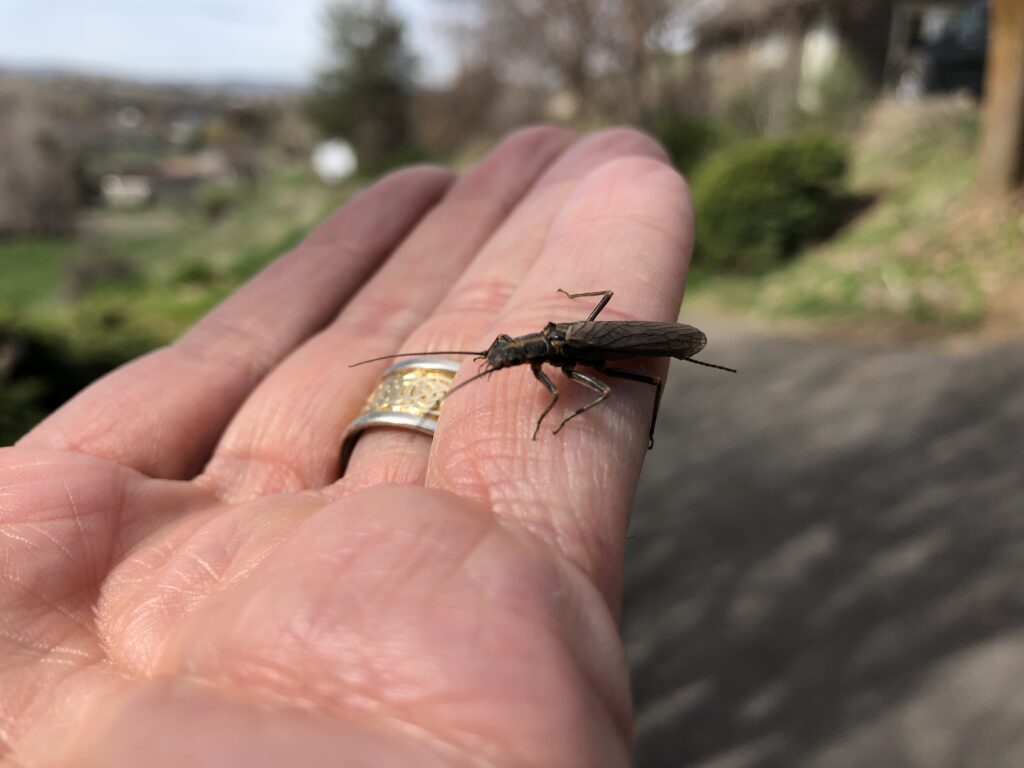
Scouting the Snoqualmie Middle Fork, I tried a couple of bright Stimulators that I carry in my Terrestrials box, in my vest.
It wasn’t until later that I realized I really didn’t have a good match … or even a kind of good match … for that stonefly.
So…
- #12 Natural Bend hook – 3xLong, Wide Gap
- Veevus 8/0 thread (E01 – Black)
- Tail – Black Elk Rump
- Wing – Brown Bull Elk
- Dubbing – Mahogany, Super Fine Dry Fly
- Rib – Small wire, Hot Orange
- Abdomen Hackle – Grizzly Golden Olive in #14
- Thorax Hackle – Grizzly Burnt Orange in #12
I know I’ve done a Stimulator, on another post, but it can’t hurt to revisit, right? Besides, I am probably doing it slightly differently, as my tying style continues to evolve.
Crimp down the hook, and mount the hook in the vise.

Wrap on the thread onto the hook, starting about an eye width back from the eye.
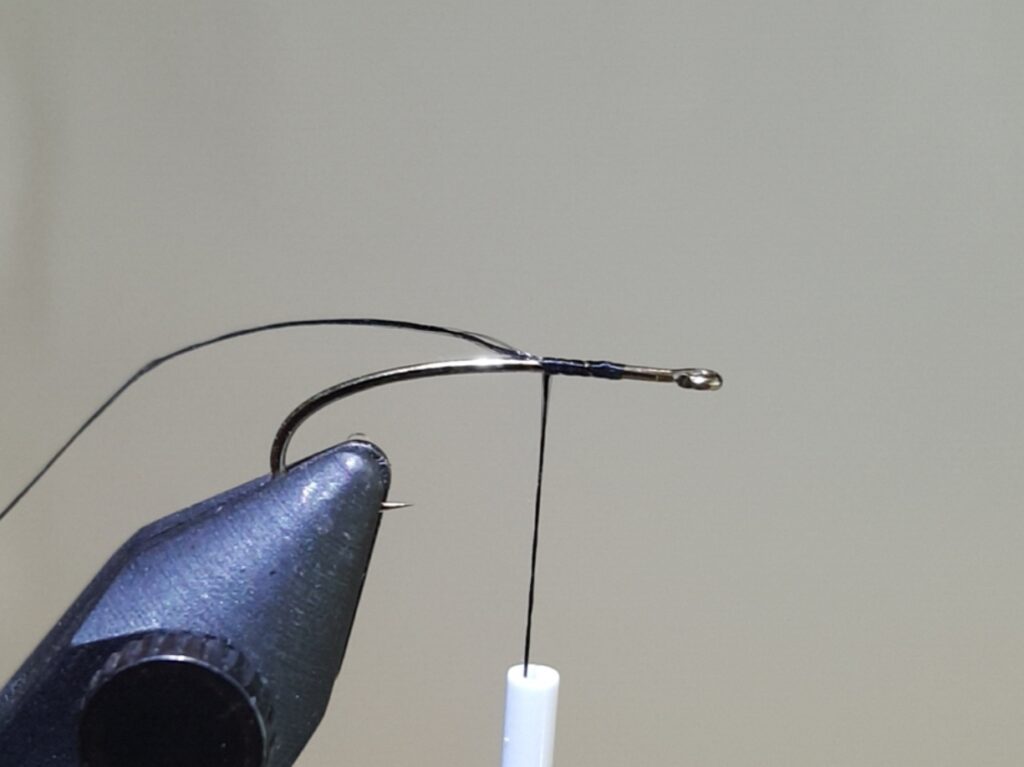
Wrap to the back (trimming the tag end halfway through), then cut, stack, and line up a smallish bundle of the tail hair fibers. You are looking for a length of roughly the distance between the eye and the point.
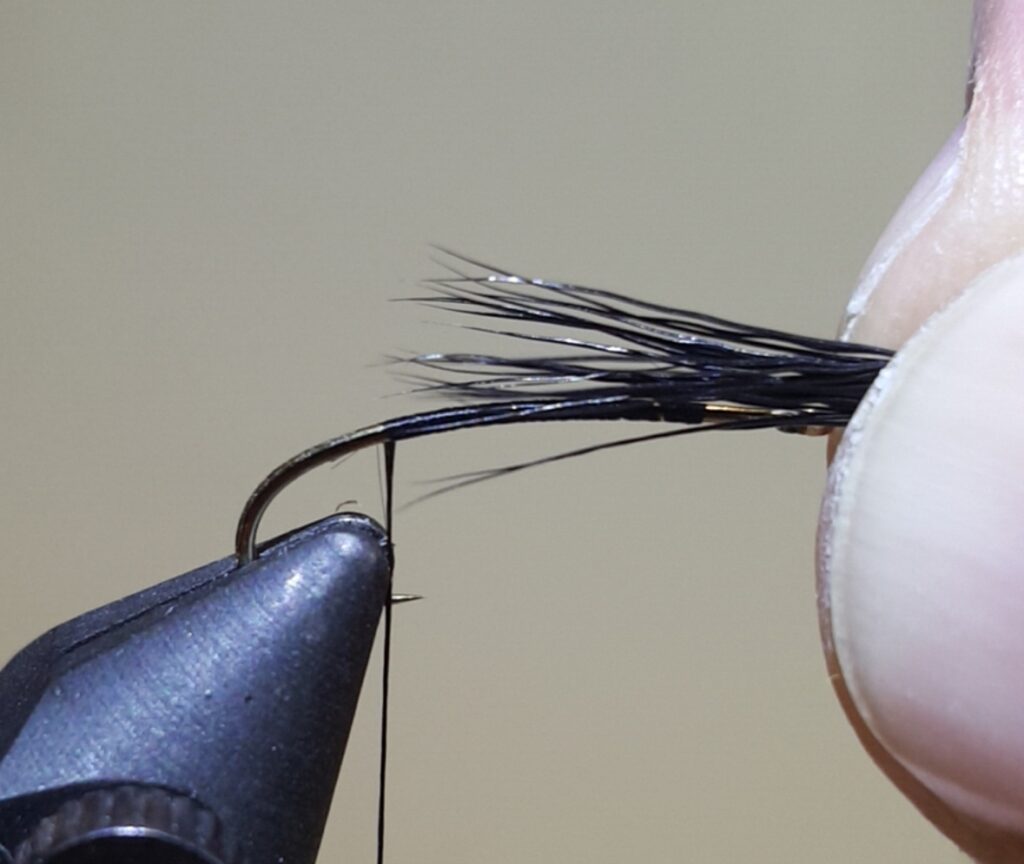
Tie this in, at the point just above (or slightly behind) the hook point. A couple of tight wraps, then a few behind that are slightly looser, will often help to keep the tail from flaring too widely. Wrap forward, to create a body of elk hair fibers along the hook shank, that might retain some air in them.
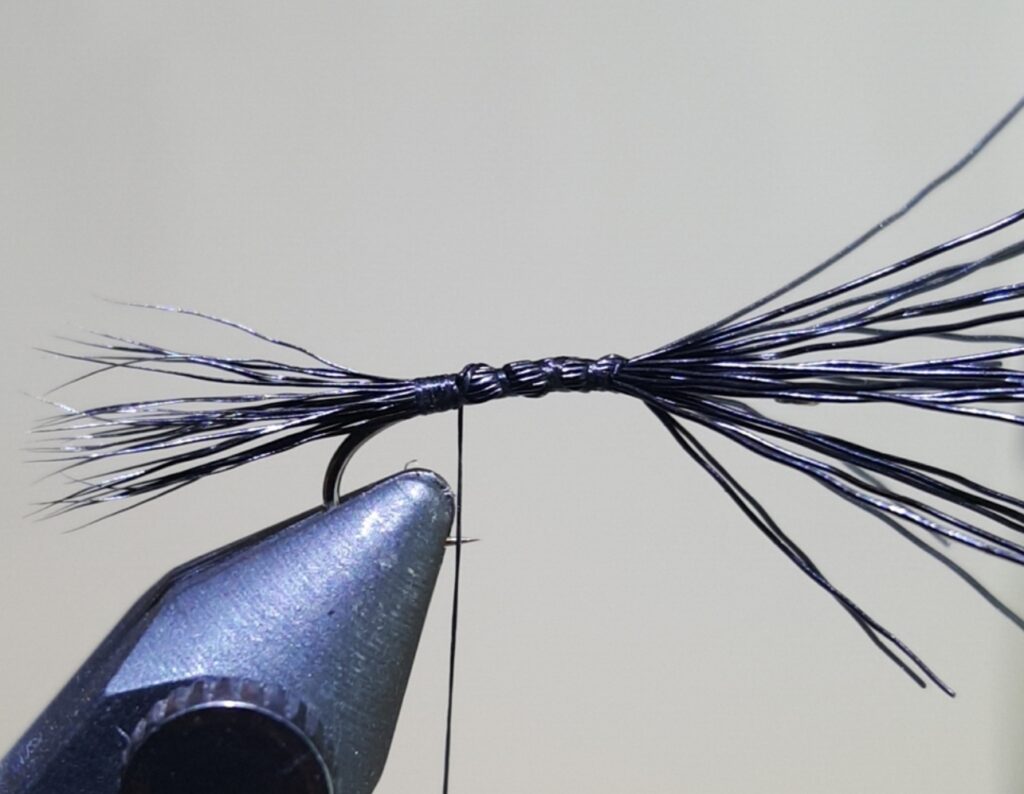
Return the thread wraps to the tail base, wrapping in the end of the wire, as you go.
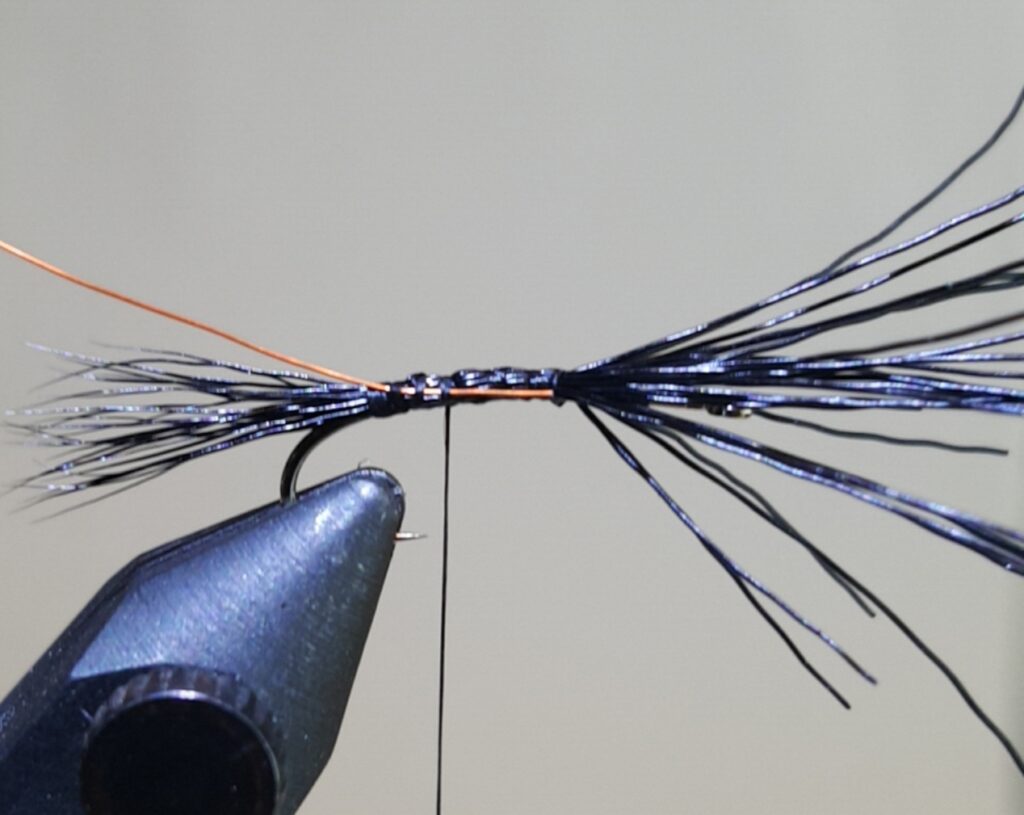
As you wrap forward to anchor the wire more fully, tie in the stem end of the abdomen hackle, returning then to the base of the tail.

Dub forward, adding a bit of a taper to the abdomen.

At this point, I usually half-hitch the thread into this position, so I can hang it on the rotary arm, to keep it out of the way. However you avoid entangling with the thread, wrap the hackle back over the dubbing in wide turns.
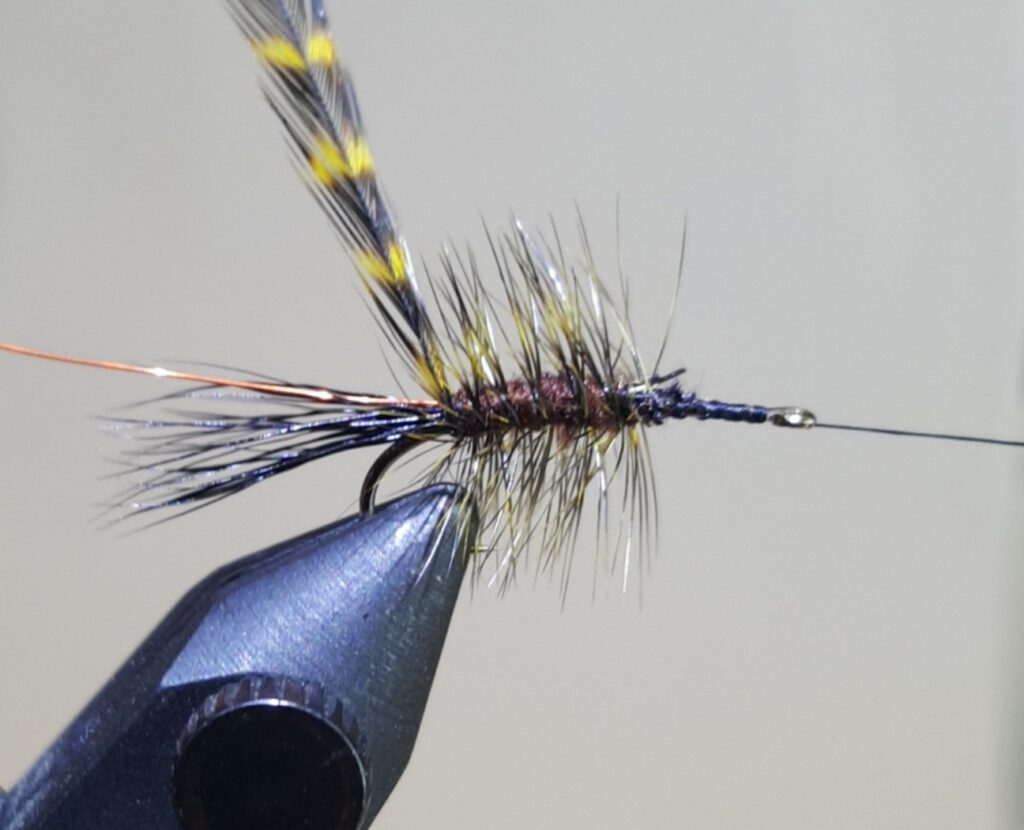
When you get to this point, and while holding the hackle reasonably taught, wrap the wire around the last turn of the hackle, just at the base of the tail, then wrap it forward, overlapping the hackle and pinning it down.
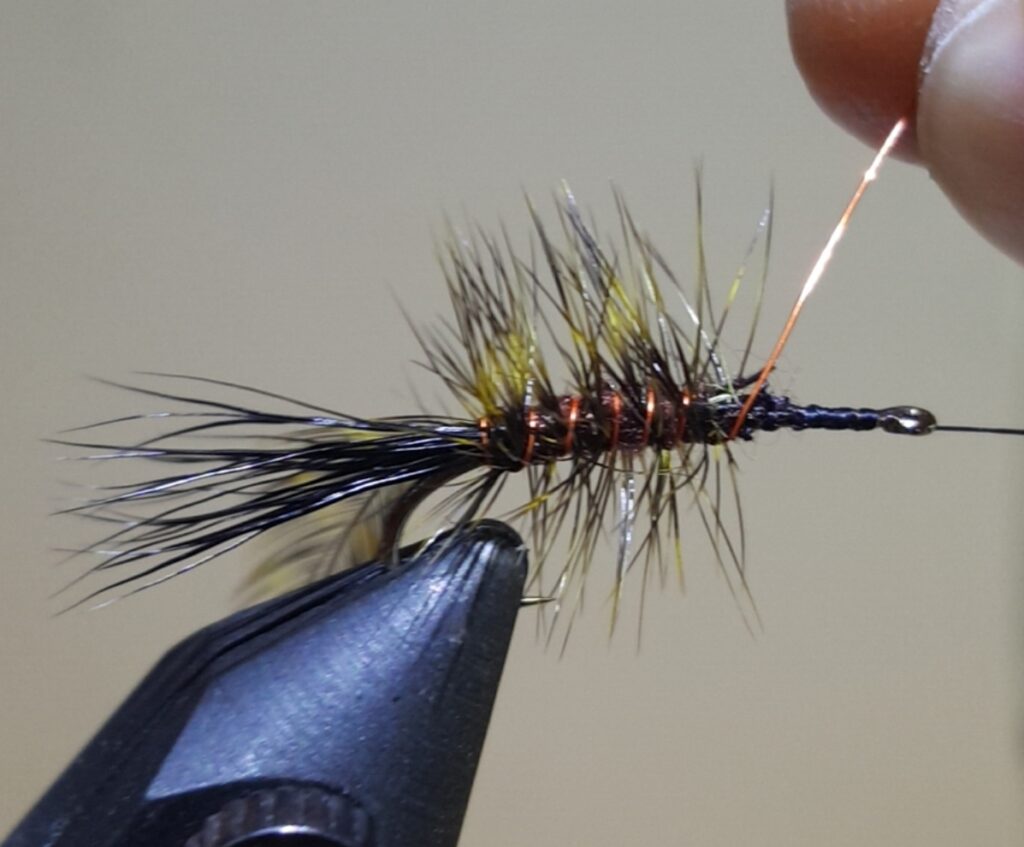
Anchor the wire down to the hook with two tight wraps of the thread, laying it forward, then pull it to the back and give it two more wraps to pin it down, before cutting or helicoptering the wire off.
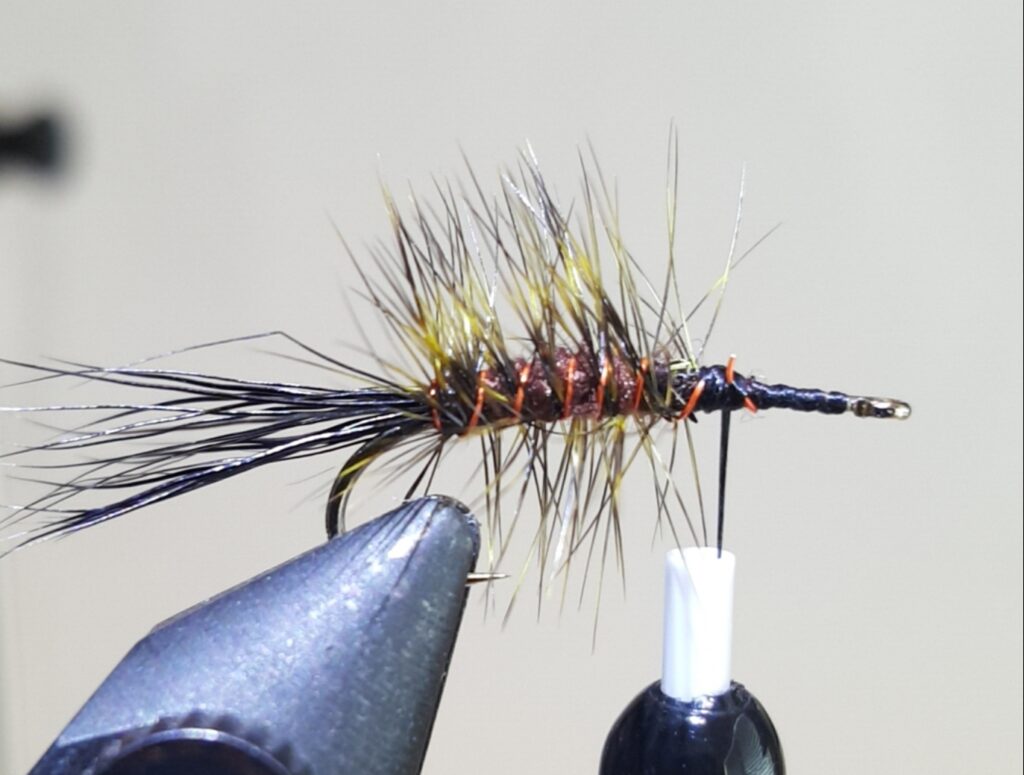
Now measure off a medium-sized bunch of the wing hairs, clean the under-hair out, stack them, and measure off a section that is as long as the hook.
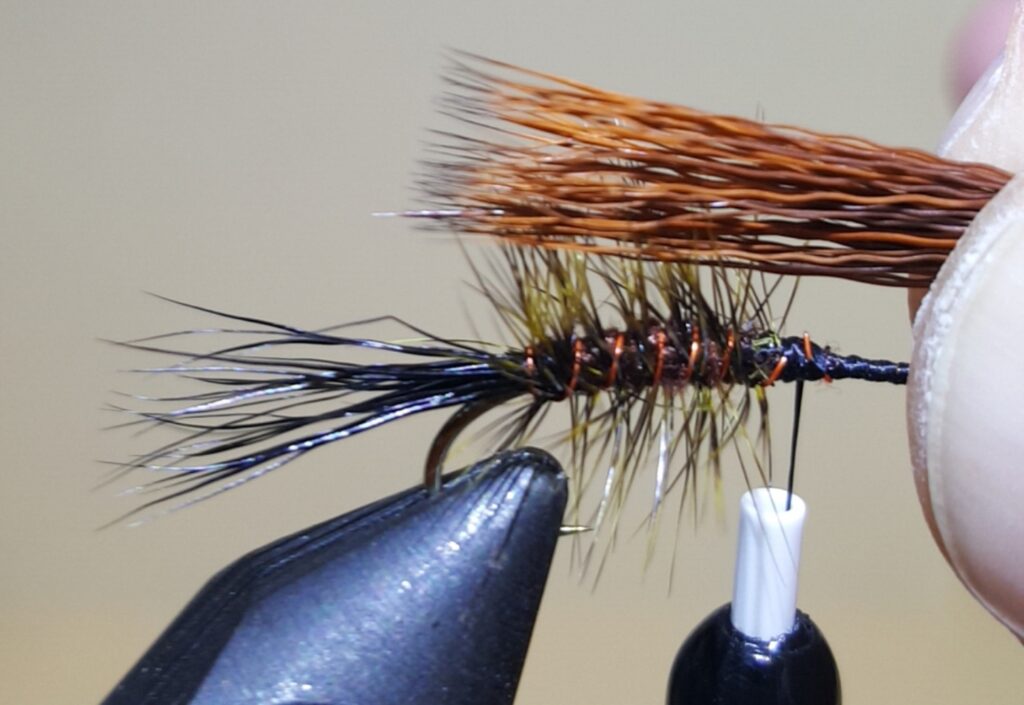
Tie this in, using the same tight-then-relaxed wrap pattern as the tail hairs, so it lays back without excessive flaring.
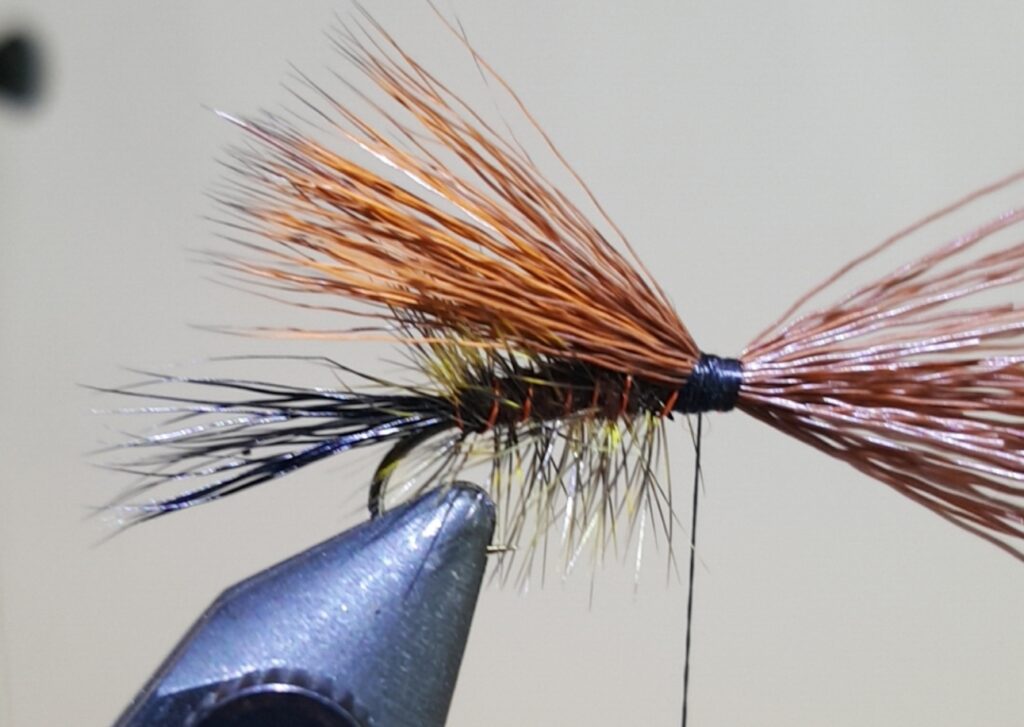
Trim off the base ends of the hairs, in a sharply angled ramp, give it a few wraps to anchor it in place, then lay the base of the thorax hackle against this and wrap them all down to create something of a cone-like nose.
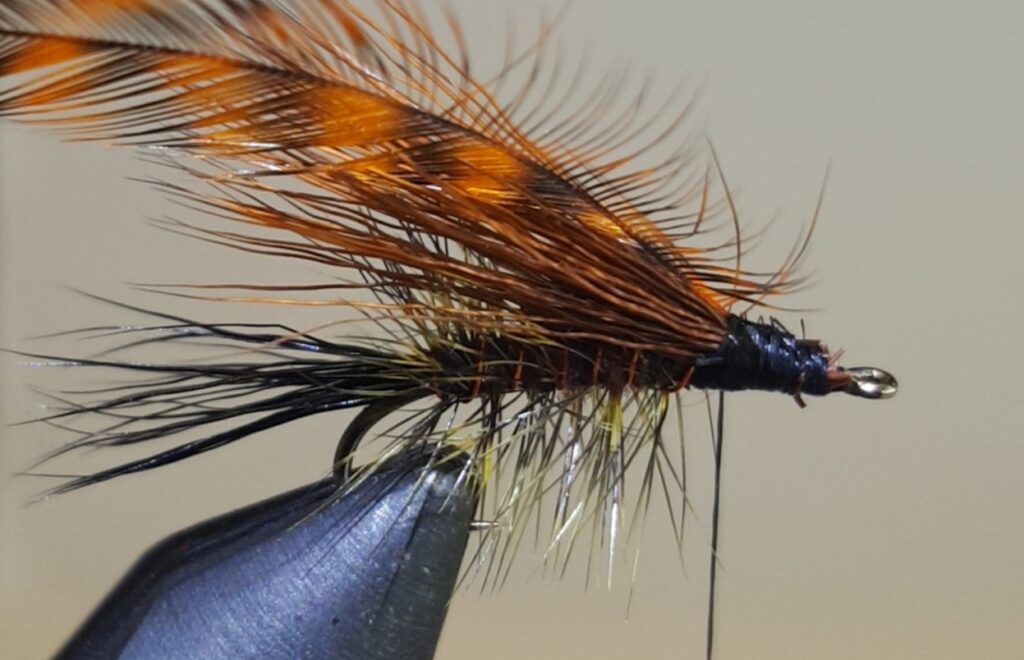
Starting right at the first exposed portion of the thorax hackle, dub forward to fatten up the front of the fly.
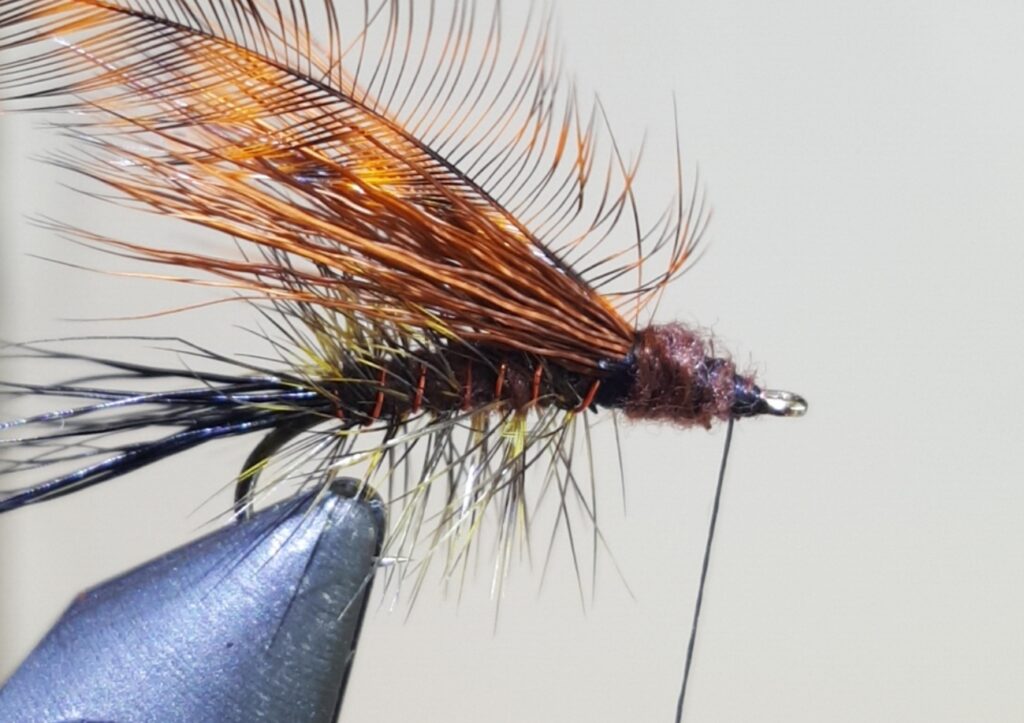
With this in place, wrap the thorax hackle forward in tight turns, then anchor down the last wrap of it, just behind the eye.
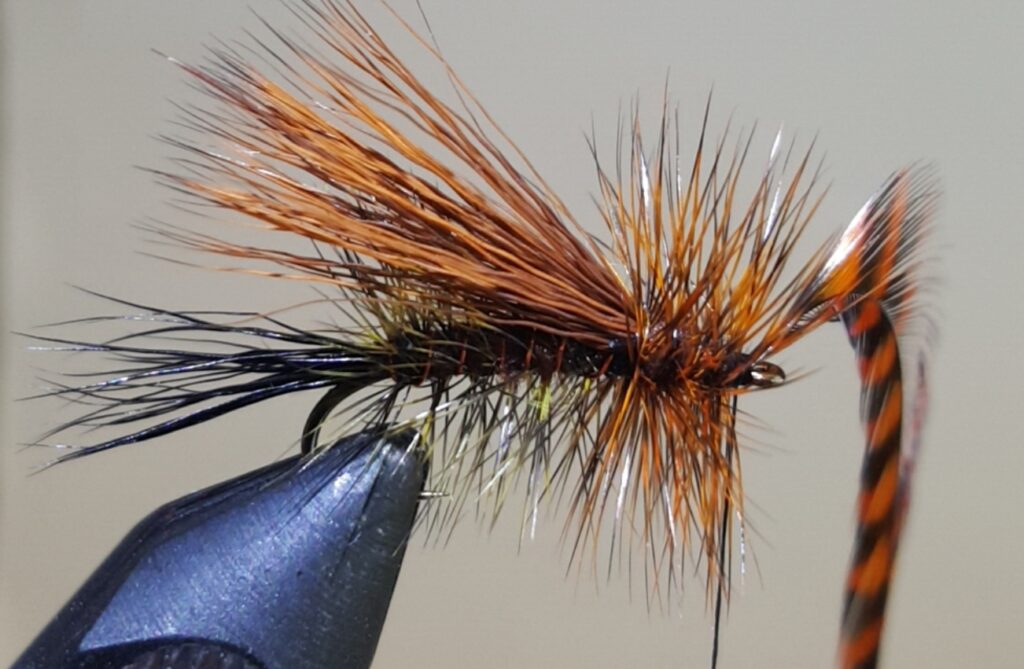
Two tight wraps to anchor down the hackle, then pulling it to the back and giving it two more, will help to keep the fibers out of the way, when you then trim off the hackle and whip finish the fly.

Not a bad version of a Stimmy. Dark, and no doubt will darken even more when wet, so it may just mimic the Little Black Stone enough…
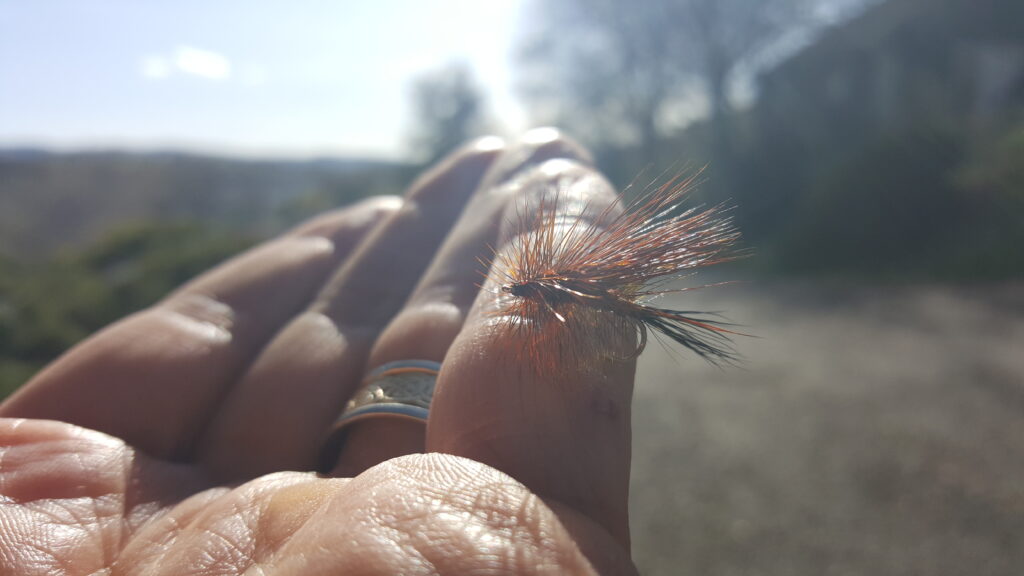
Maybe… ?
Only one way to really find out, after all.
Tight lines…
